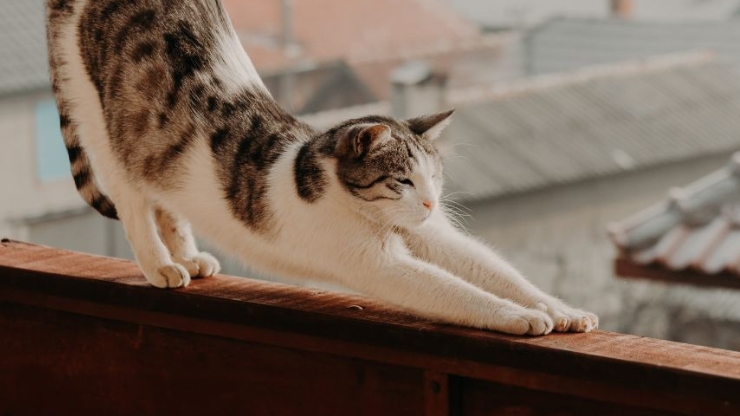Urban veterinarians may know more about cats landing on their feet than their rural counterparts. Just around springtime, they start seeing cats who have fallen out of windows or taken swan dives off balconies. Cats don’t seem to fear heights, even if that height is three or four times higher than any tree they might climb. Amazingly, many cats survive falls from ridiculous heights, even up to twenty stories. Unfortunately, many cats are killed each year when people open the windows to let in some fresh air. And this answers our question: Cats do not always land on their feet. However, they will certainly try.

Most of us have seen cats fall off some object in a precarious, way, perhaps back first, and yet the cat twists around perfectly in mid-air and sticks a four-point landing that would make a gymnast blush.
The ‘righting reflex,’ or the feline’s ability to orient themselves feet-first during a fall and their ability to absorb the shock of impact through their feet to their joints is part of the key to their survival as predators. After all, cats have no problem jumping from limb to limb in pursuit of a bird or other small prey.
If a cat slips and falls during a high-up hunt, their first weapon is their claws. They will grab onto anything available and sink in their claws, clamping with their limbs, and use their back feet to scrabble onto a limb or other surface. Failing this, they rely on their automatic righting system to make sure they land feet first.
Cat Righting Reflex
Falling cats reflexively right themselves during a fall, starting with their head and ending with their tail. First, a cat will orient its head so that they can spot the ground. Then, the rest of the body will spiral around in a twisting motion to match the position of the head. This all happens automatically, purely by instinct.

Once its body is in the proper position, feet down, a falling cat will spread its legs outward almost like a sky-diver trying to catch some air. Cats do not stiffen up before landing, either. If anything, they relax. Then, as they land on their outstretched feet, their supple and relaxed joints, including their flexible spine, will absorb an impact much greater than a human could withstand.
Why Lower Heights Can Be More Dangerous
Paradoxically, this ability often allows cats to survive falls from greater heights more easily than falls from lower heights. This makes intuitive sense. When a cat falls from a higher distance, he has more time to orient himself in the air, spot the ground, and stick the landing. This is coined ‘high-rise’ syndromes by vets.
As has been noted by veterinarians, cats may have a better chance of surviving a fall from a high rise than from a lower building. Falls from between two and six stories are actually MORE dangerous for cats than falls that are lower than two stories or higher than six. And, in fact, some cats have survived falls from thirty stories. These cats, however, did sustain severe injuries.
While a cat’s self-orienting trick happens very quickly, it still takes some time. When a cat falls a shorter distance, they have less time to re-orient themselves and set themselves up for a good landing. A higher fall gives them more time to orient and spot the ground, thus assuring they land the way they want to.
So, although cats will almost always try their best to land on their feet, there is no guarantee they will succeed. It’s not magic, after all.
What’s The Maximum Fall A Cat Can Survive?
A height that is too high, however, is simply too high to survive, no matter how well the cat lands. what’s the limit?
We don’t know for sure how far the average cat can fall and survive. Thirty stories are too high as cats sustain severe injuries at this height, including broken limbs, skull fractures, and collapsed lungs.
Cats have survived falls from twenty stories, however, with little to no injury. Twenty stories are approximately 200 feet (or less), suggesting cats can potentially survive falls from up to 200 feet.
Many more fall injuries happen in cats living in urban areas. If you live on a high floor, do not rely on your cat’s superhuman landing ability to save her from a fall. Make sure you have screens on your windows and do not allow your cat to play on a high balcony!
Balconies are especially dangerous as cats will walk on the railing and may jump at birds or even falling leaves. They do not think about heights the way we do and may not see a 100-foot drop as a potential danger. Do not risk it!

